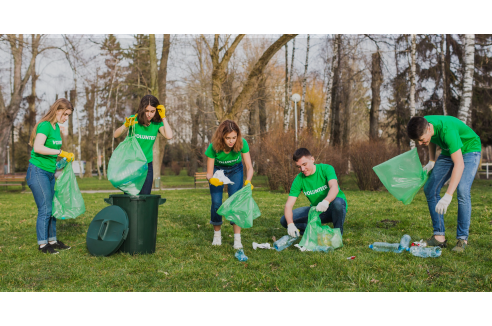A hoarding disorder is defined as a chronic inability to get rid of belongings due to a perceived urge to keep them safe. Garbage, clothing, old newspapers, and plastic bags are among the things that hoarders usually gather. The amount of clutter that permeates their houses can make persons who suffer from hoarding disorder feel trapped and helpless.
A person may be resistant to admitting they have a problem if they have begun to hoard items in their home. It is important to handle this circumstance with care and the appropriate strategy to prevent further harm. Many hoarders experts offer comprehensive guidance to clean and declutter the residences of hoarders and their families. This not only includes recommendations on cleaning chores and tactics but also optimum emotional support to tackle mental health challenges.
How to Start a Hoarding Cleanup?
Thorough cleaning of a hoarder’s residence is vital for the health and welfare of those who live there. Several major dangers are associated with hoarding, including:
- Heightened risks of fire and tripping
- Increased indoor air pollution levels
- Biohazards
- Pest infestations
Hoarders find it extremely challenging to part with their belongings, hence cleaning should be done carefully. It is important to give objects thoughtful consideration because they might genuinely be useful or have sentimental worth.
Start by recognizing and addressing potentially hazardous things, such as spoiled food and insect infestations. Also, make sure you are wearing the proper safety gear, such as hard hats, masks, gloves, and strong boots. Adequate assistance is not always guaranteed, and thorough hoarding cleanups may take days or even weeks. Therefore, make the necessary preparations and give yourself enough time for hoarding help for families. Recognize how everyone—friends, family, and the hoarder—is affected emotionally by the situation. Tremendous cleanups can be stressful, so it is crucial to pace yourself and take care of any emotional demands, tension, or worry that may surface.
Read More: The Hoarding Cleanup Guide: Cleaning A Hoarder’s House: Step-By-Step Guide
Tips to Help Hoarders Clean Out
- Talk About Decluttering
You can set the tone for successful intervention techniques that deal with the hoarder’s psychological issues and the clutter in their house by having an empathetic and understanding conversation with them. Talk about the safety benefits of decluttering and let them know you’re there to encourage them.
Offering emotional support and direction for long-term recovery from hoarding problems is just as important as decluttering the physical environment when starting a conversation. This first step creates the groundwork for a supportive connection, which is necessary for helping them receive assistance and construct modifications to their living space.
- Hire a Professional Cleaning Company
A credible hoarding cleaning business has the workers, vehicles, equipment, and waste management connections necessary to efficiently and quickly eliminate substantial amounts of debris. They handle all of the laborious physical labor on your behalf. They are equipped with the right tools, safety clothing, and equipment to:
- Clear waste
- Clean the area
- Make it fit for living
Additionally, they will listen to and understand your needs while offering assistance along the way. Due to their expertise in helping hoarders clean, they adhere to safety protocols and dispose of waste items properly by following industry best practices and regulations.
Read more: How to Help a Hoarder Parent? 5 Steps to Take Right Now
Need Hoarding Cleanup? We’re Just a Call Away
& Ready to Respond Quickly!

- Make a Plan for Hoarding Cleanup
Maintaining a secure living environment and cleaning up can be quite daunting when dealing with hoarding disorder. Thus, creating a thoughtful plan is essential to guaranteeing that the hoarding cleanup procedure is effective and considerate of the person’s requirements. Here are the three major phases of planning:
- Evaluation: Hoarding help for families requires assessing the situation thoroughly before beginning any cleaning efforts. Consider the amount of clutter, possible risks, and any special needs or sensitivity issues of the hoarding person. This preliminary evaluation will assist in defining the extent of the required work and creating a customized cleanup strategy.
- Set definite objectives Define specific goals for the cleanup endeavor. Describe what success looks like in terms of reclaiming the living area and decluttering. To monitor progress during the process, set reasonable deadlines and benchmarks.
- Design a Strategy for Cleaning: Make a thorough cleaning plan that outlines the various parts of the living area that are supposed to be cleaned. Sort sections according to user preferences, functionality, and safety considerations. To expedite the decluttering process, use methodical techniques like classifying objects (keep, donate, and dispose).
Read More: Professional Hoarding Cleanup Services
- Sort and Organise Each Room Separately
Now that you have a plan in place, you can go on to the cleaning and organizing stage. Sort through the clutter and discard items that don’t have much value using your room-by-room strategy and the criteria you’ve set for each item. Next, make distinct piles for stuff you want to donate and objects you want to keep.
Remember, supporting a loved one who suffers from hoarding disorder is extremely difficult and draining on an emotional level. Hence, hoarding experts suggest remaining patient and amiable while dealing with handling sentimental belongings. While working towards your goal, take regular breaks and keep up positive chats about how each step is getting you closer to it.
- Use the Box Technique
The Box Technique is a very useful strategy for tidying and arranging the belongings of a hoarder. This method entails going through the hoarder’s possessions in their home using boxes or other containers. Labeling the boxes with categories like “keep,” “donate,” “sell,” “trash,” and “unsure” is the first step.
The hoarder sorts through their belongings while placing each item in the appropriate box according to its significance and value to them. This approach facilitates methodical management of the disorganized area and decision-making on each item. Moreover, hoarders find it easier to evaluate the necessary and sentimental value of their possessions when they can see them visually organized into distinct compartments.
Bottom Line
Creating a practical schedule based on your objectives and following it in a sophisticated yet smart manner is the key to transforming from hoarders to home. This not only declutters the space but also takes the hoarder’s emotions into account, which guarantees a hassle-free and smooth process. Looking for professionals to clean up the clutter caused by a hoarder at your place? Well, it’s time to eliminate your worries as our professionals at LifeCycle Transitions have extensive experience in helping hoarders clean their spaces for an improved living style.
